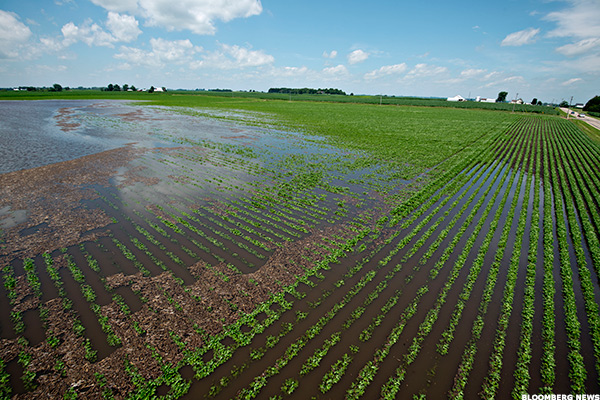Climate Change Is Hurting Food Security: Why Our Crops Are Threatened

NEW YORK (MainStreet) — Many nations in the world may already be experiencing theirpeak yields for certain grain crops like rice, wheat and corn, but now two alarming new studies have been released that predict that the long-term security of our food crops be further compromised by climate change and other environmental factors such as air pollution.
In particular, research out of the Massachusetts Institute for Technology and published this summer in Nature Climate Change found that climate change and air pollution (particularly ozone pollution) not only act independent of each other in negatively impacting crops but also can often interact and causeadditional damage.
The research--which was conducted by Colette Heald, an associate professor of civil and environmental engineering (CEE) at MIT; assistant professor at The Chinese University of Hong Kong Amos Tai; and Maria van Martin at Colorado State University-- analyzed the global production of rice, wheat, corn and soy. The researchers focused on these crops, because they comprise more than half the calories consumed by humans around the world.
“In regions that are heavily polluted to begin with (e.g., China, India), climate change will have less of an impact than any enacted ozone change,” says Tai. “The difference in sensitivity can also arise from cultivar difference, e.g. maize grown in generally cool regions may be more sensitive to heat than those grown in warmer regions.”
Using computer models, the researchers also found that global food production was projected to fall by as much as 15% under one scenario. However, an alternate scenario that projects a decrease in greenhouse gas emissions lowered that drop to 9%, indicating that pollution control measures could help curb the extent of future crop failures. In the absence of better air quality measures, though, rates of malnourishment were projected to increase from 18 to 27% by 2050 — about a 50% jump.
“In addition to controlling the emissions of ozone precursor gases from fossil fuel combustion, we may also select more ozone-resistant cultivars of a given crop,” says Tai. “Completely switching to another crop species that is more ozone-resistant may, however, be more difficult because dietary habits within a given culture tend to be quite ingrained, and even for staple food crops each species differ in their nutritional content.”
Currently, the full extent of how ozone pollution affects crops is not entirely known, and it is not always easy to identify.
“[Agriculture] is very sensitive to ozone pollution," said Heald. “[These findings] show how important it is to think about the agricultural implications of air-quality regulations. Ozone is something that we understand the causes of, and the steps that need to be taken to improve air quality."
For this study, NCAR scientist Claudia Tebaldi and Stanford professor David Lobell also used computer models using data about weather and crops to calculate the chances that climatic trends would have a negative effect of 10 percent on yields in the next 20 years. In particular, the researchers quantified the extent to which temperature increases would contribute to reduced yields. For instance, they found an increase of 1 degree Celsius (1.8 degrees Fahrenheit) yielded a 7% decrease in corn yields and a 6% decrease in wheat yields.
“The truth is that over a 10- or 20-year period, it depends largely on how fast the Earth warms, and we can’t predict the pace of warming very precisely," Lobell said in a release. "So the best we can do is try to determine the odds.”
“Climate change has substantially increased the prospect that crop production will fail to keep up with rising demand in the next 20 years,” said Tebaldi.
The study, which was funded by the National Science Foundation and the U.S. Department of Energy, appeared in the July issue of Environmental Research Letters.
No comments:
Post a Comment